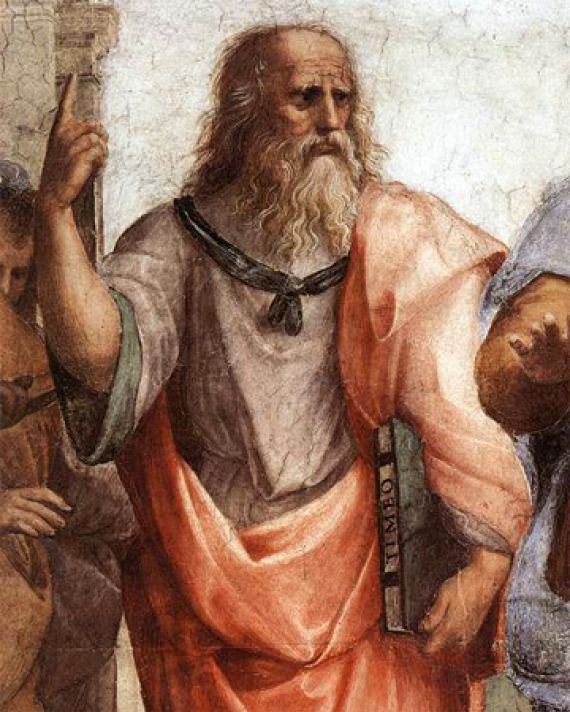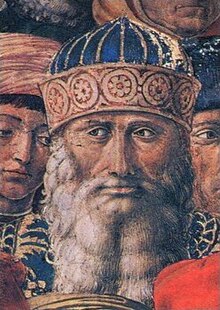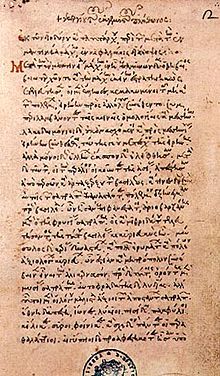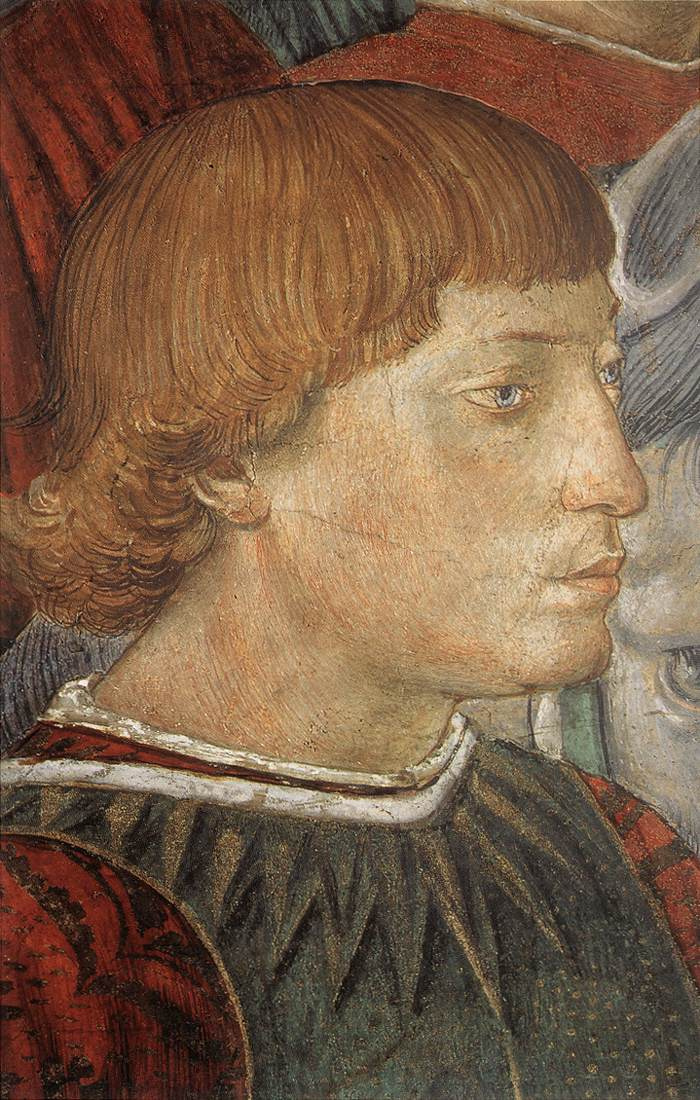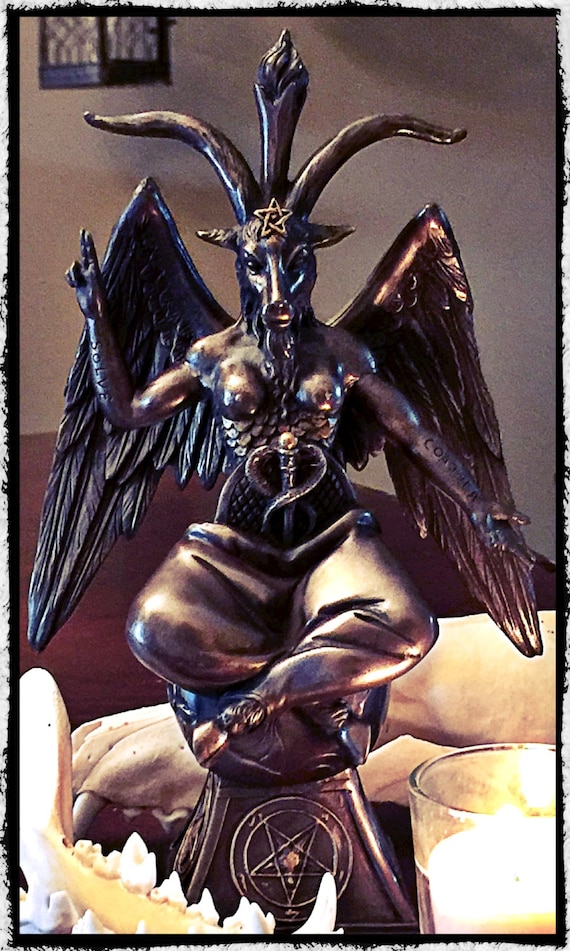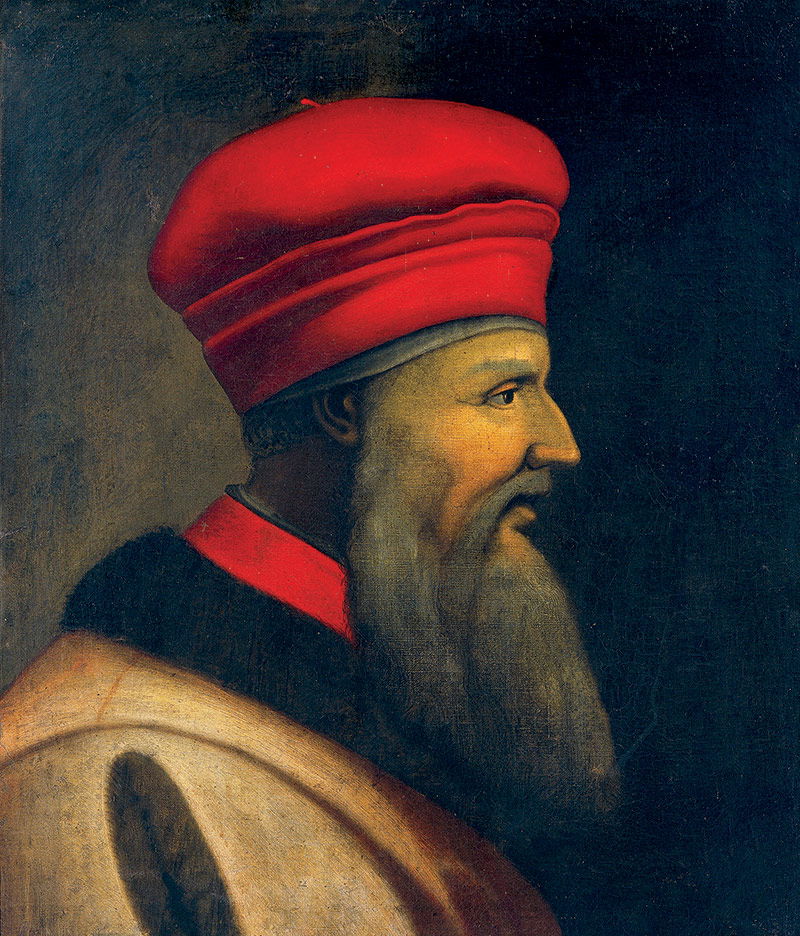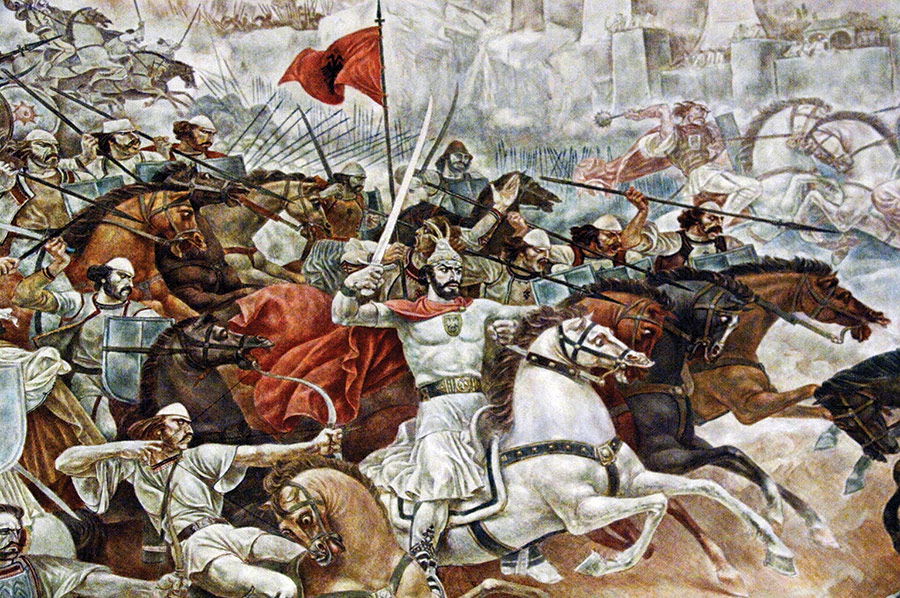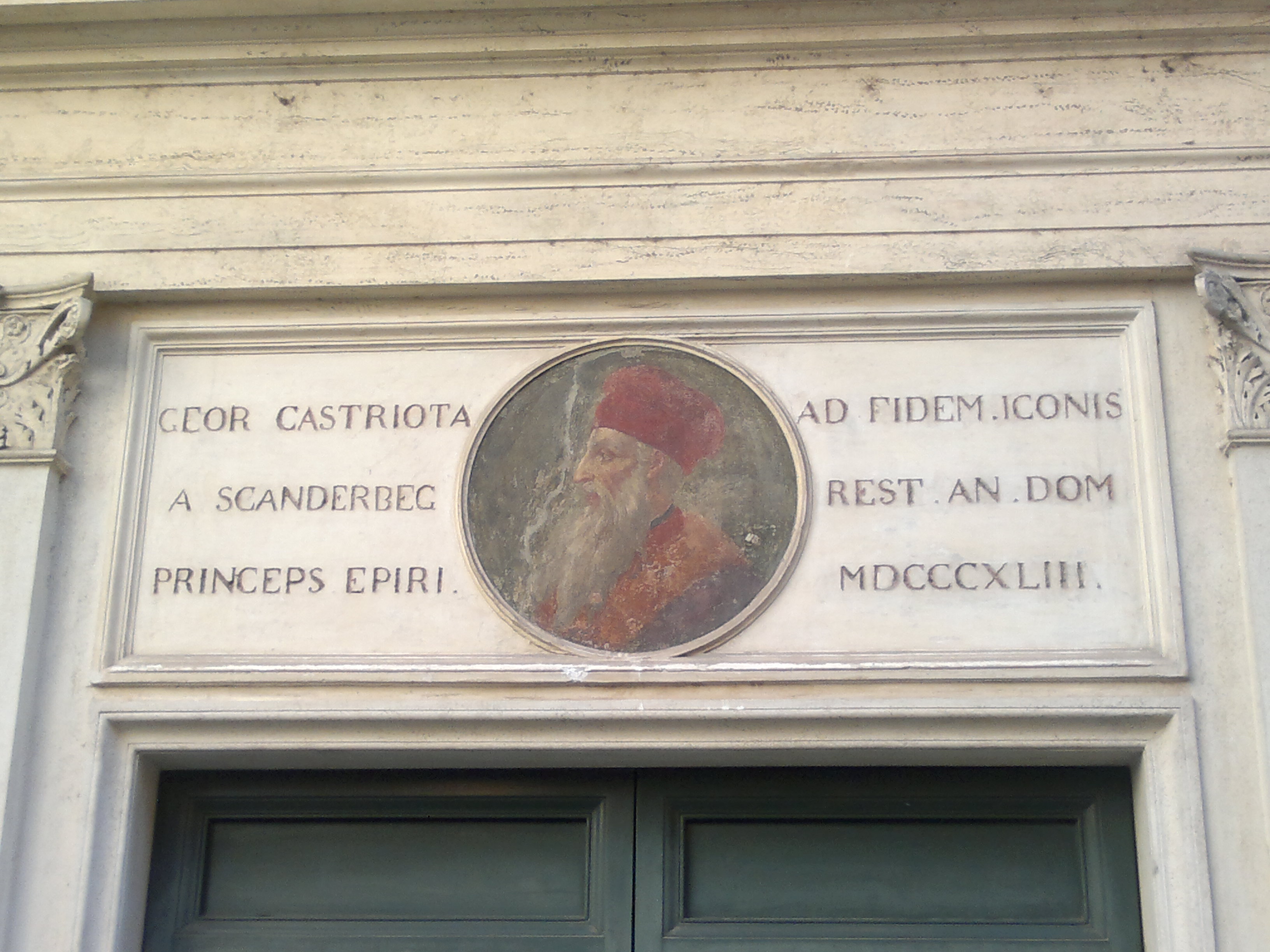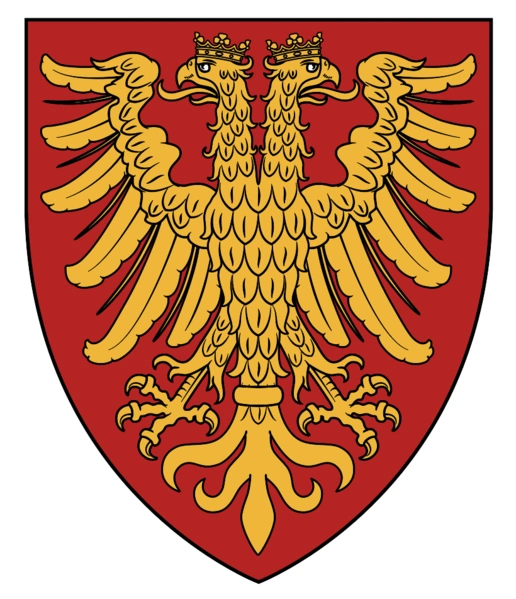One of the most famous incidents of the Fall of Constantinople is the fate of Loukas Notaras, the megas doux. Naturally the most lurid account has passed down in folk history. In this (pro-Greek) version, the sex-mad beastly Sultan lusts after the young son of Notaras, who refuses to hand him over and suffers Mehmed's wrath.
Other versions (including Edward Gibbons) focus on Notaras as a duplicitous traitor and Mehmed executing him for being untrustworthy (which would be a curious policy if the Sultan ever wanted to have foreign spies and agents in the future) or caught in some intrigue.
Theirry Ganchou, a Byzantine scholar at the Sorbonne has done magnificent work in this area. By looking at both Greek and Ottoman chroniclers of the time and cross referencing the diplomatic correspondence of Venice and Genoa, he has pieced together a picture of how what the governments of these Republics understood to be the situation on the ground in Constantinople evolved through the days and weeks of the summer of 1453.
I would certainly consider Ganchou's account to be most likely closest to the truth. What I think is interesting is that one can see within this version that both of the other two are not that far off reality in certain ways - in other words they are mutations of the truth to fit a bias, rather than total fabrications.
The certain facts of the matter are that Loukas Notaras was executed on 3rd June 1453. This means that he survived for four full days after the siege was ended. Every account indicates that his situation was not initially a dire one but that something happened that radically changed the Sultan's attitude towards him and he was then swiftly executed along with two sons and two sons-in law (then another 30 nobles the next day).
Ganchou holds that the accounts of Isidore of kiev, Kritoboulos of Imbros and Ekthesis Chronike are less polarised about what ook place and so perhaps more trustworthy than those of Niccolò Barbaro, Nikolaos Sékoundinos, Doukas or Chalkokondylès. From this he concludes the following course of events.
The day after the fall, Mehmed II was at first magnanimous. The high dignitaries and all other survivors who had been taken captive were scattered chaotically across the Turkish camp and ships. It was logical to methodically identify who they had taken (not least in order to arrange ransoms where prudent - particularly those citizens of other nations). Loukas Notaras, having been the man to formally surrender the city, was already identified. To facilitate the identification process, each dignitary found was invited to draw up a list of members of his family in order to be reunited with them. Doukas reports that it was Loukas Notaras who was charged with establishing these lists.
Mehmed's logic here appears to have been that by making advances to the former ruling class, he would reassure the Constantinopolitans so that they - having paid their ransoms - would not desert Constantinople en masse. To avoid such an exodus, he even entrusted to Loukas Notaras, the "first mediator" of the deceased basileus. This is very much in line with methods of conquest used elsewhere by the Ottomans. Theirs was not a conquest of decimation - like the Mongols - but an absorption of peoples.
Mehmed reportedly told the dignitaries that they were now "free", and allowed them to return to their homes. But then, sometime between 29th May and 3rd June, negotiations with Notaras broke down.
It seems that the intransigence of Notaras played a key part in the tragic final outcome. As a basis for their agreement, the Sultan demanded that as a token of his good faith, the megas doux consent to have his youngest son placed in his saray and here we have the origins of the salacious folk history of events.
In the circumstances, this demand by Mehmed is perfectly understandable. It was a prudent political tradition and many sons of vanquished had already become pupils of the Ottoman palace school before later resettling on their throne: the two most famous being Albania's Skanderbeg and both the sons of Vlad II of Wallachia. In other words, Mehmed's condition was a simple and very common, claim of a hostage.
But these examples also would have showed Notaras that, while not inevitable, there was a great risk that the hostage would be forced to convert to Islam. In addition, this new requirement of the sultan could appear to the megas doux as an abuse of power in complete contradiction with its present situation. Mehmed had supposedly already liberated his family and so he should not now suddenly behave now to his sons as if they were children of slaves. Chalkokondyles reports that Notaras rebelled against this request by declaring that he did not understand what he had done to have imposed upon him now this vexatious measure.
Faced with this impasse, and taking note of the hostile attitude of Notaras, Mehmed then ordered the execution of all high dignitaries and their adult sons. As for their wives, daughters, and those of their sons not older than adolescence, they fell into slavery, becoming the personal property of the Sultan.
An interesting note in Chalkokondylès's account states that Notaras requested his sons be beheaded first - so he would be sure they did not convert to Islam to escape their fate. This adds credence to the idea that the loss of his children to Islam was of significant concern to him. Secondly, Chalkokondyles says that the sons begged their father to tell the executioners that it was possible to have them deliver the wealth they possessed in Italy, so as not to be killed. Perhaps Loukas already had his daughters in mind when he chose not to do so.
And so it was that the two eldest sons of Loukas Notaras, along with the husbands of Maria and Theodora (Theodosos Kantakuzenos and Manuel Palaiolgos) were executed. And also that in the lamentable procession of the ladies of the aristocracy marching towards Adrianople on the 18th June, there were at least three widows: the wife of the megas Doux (who died on the march and was buried in what is now Kirklareli province in Turkish Thrace) and his two daughters, Theodora Palaiologina and Maria Kantakouzene. We might also conclude that either Maria was pregnant with Eudokia Kantakouzene or the child was among this group since her father had been executed and she later appears with her aunts in Italy). As for the young boy who had triggered the tragedy Jacob (Iakobos) was twelve years old at the time of the events. Separated from his sisters, he was destined for the personal service of the sovereign in his saray as a page, like many of the teenage sons of fallen dignitaries. We know that he escaped from the palace sometime around 1460 (aged 19) and made his way to Italy.
The first foreign embassy to the Sultan following the conquest was naturally enough the closest on the ground. It was weeks before news reached Italy but the Lord of Ainos, Palamedes Gattilusio, would have practically been able to see the fires of the siege from his battlements. Ainos (modern day Enez) sat on the Marmara coast at the mouth of the maritzsa river, the same river that wound past the Ottoman capital of Adrinople. A prudent man, he had stayed on good terms with both Byzantines and Ottomans and it would have been nothing but common sense to send congratulations to Mehmed as soon as news reached him of the fall. Kritoboulos of Imbros says the delegation from Palamedes Gattilusio arrived at Adrianople in June.

But Palamedes had another reason to begin speaking with the conquerors. His late eldest son, Giorgio, had married Helena Notaras, the oldest daughter of Loukas Notaras. At this time, it appears she was living with her father-in-law as the Great Lady of Ainos. We know from records that a daughter of the megas doux negotiated the release of the rest of the Notaras family while they were on their way to Adrianople (but not before the matriarch died in Thrace). This daughter is not identified - it might have been Anna, it might have been Helena or it might have been both (since Ganchou's hypothesis is that Anna had been sent to Ainos for her protection before the fall, not Italy).
Now the question arises - why were the Notaras daughter(s) able to ransom both Theodora and Maria but not Jacob? With Loukas Notaras dead, there was no value in him as a hostage. If we reject the idea that Mehmed was infatuated with the boy as a sex slave, we are left with the probability raised by Ganchou that the reason he could not be ransomed was that he had already converted to Islam. There is no documentary confirmation of this conversion and the fact of his escape and subsequent life in Italy speaks in the very least towards it being insincere if it took place at all. Whatever the situation, either Mehmed refused to give Jacob up or Helena did not attempt to purchase his freedom (perhaps on the incomplete information that the sons of Loukas Notaras had been executed).

Meanwhile, the Italian governments were buried under an avalanche of conflicting information about what had taken place. As late as August 16th 1453, the Genoese chancellor was writing to correspondents insisting that the extent of the eastern disaster had been exaggerated and gave as evidence the fact that the sultan had made wise use of his victory and reappointed Loukas Notaras in his position. This might be an understandable reading of events if the author of that report had fled the city sometime between 29th May and 3rd June. The Genoese were particularly interested to know the fate of the Megas Doux since they held in their possession a great fortune at the Bank of St George, which had been placed there by Nicholas Notaras - father of Loukas - many years previously and never touched by Loukas (perhaps because it was seen as emergency fund in case of just such a catastrophe).
On 17th July, Venice was still unaware of the execution of its bailo, Girolamo Minotto (executed on the 30th May). On that day, one of Minotto's sons was given permission to embark for Constantinople to seek his father's ransom. By the 28th August news had clarified and the Senate granted pensions to the widow and children of their bailo following Minotto's death.
Venice then dispatched her own delegation to negotiate a peace treaty with the Sultan. The ambassdor was Bartolomeo Marcello and he took with him the Greek-born Venetian diplomat Nicholas Sagundino (Nikolaos Sekoundinos). Their most likely route to Adrianople would have been to land at Ainos. It is possible that there they came across the released Notaras daughters - we do not know but what is certain is that Sagundino was sent back to Venice in November to relay the situation and he gave a speech to the Senate in December 1453 which focused very firmly on the fate of Loukas Notaras. It is from this speech that the salacious version of events originates. Sagundino chose to make Notaras the counter example of the vices of the young Sultan, contrasting the nobility and imperturbable moral rigor of the vanquished to the savage and barbarous victor. According to him, indeed, the end of the mags doux was worthy of both an ancient hero and a Christian martyr: images calculated to strike a chord with an audience full of Christian humanists. Sagundino therefore plays up the noble figure of a truly "Roman" father who, realizing that the Sultan's request to surrender his youngest son concealed only infamous designs, refuses to obey in the full knowledge that it will condemned both him and his son. He also juxtaposes the 'pure' love of a father for the immortal soul of his child against the 'impure' love of a sexual deviant.

In Sagundino's account, Notaras exhorts his sons to accept death with inspired words worthy of Plutarch or a martyr of the first centuries. The story told in this way also echoes that of Saint Pelagius, a thirteen-year-old Christian martyr in tenth century Spain who refused the sexual advances of a Cordoban caliph. And of course, such an echo from Iberia would be a hope-inducing reminder to Greeks of the Reconquista, at that time almost completed.
Such was his eloquance that Sagundino was sent on by the Senate to repeat his performance to the Pope and King of Naples (which he duly did on December 27th and January 24th respectively). In March 1454, Genoa gave instruction to its ambassadors to Adrianople, Baldassare Marruffo and Luciano Spinola to inquire about the fate of the son and two daughters of Loukas Notaras who were said to be prisoners. In the event neither man arrived in Adrianople - one died on route, the other refused to go further than Chios out of fear.
The Notaras case therefore gained a certain amount of fame on the Italian peninsular and led to more than one creditor emerging who tried to obtain payment from the assets frozen in the Bank of St George. The resolution of who should inherit this fortune was a long and tangled affair (with the only surviving male heir being dismissed by Italian authorities on the grounds of his conversion to Islam). We know that Maria and Theodora were ransomed for 700 ducats (a much higher sum than other Constantinopolitans were freed for) and that obtaining the funds for this was very much bound up in the issue of the frozen assets.







